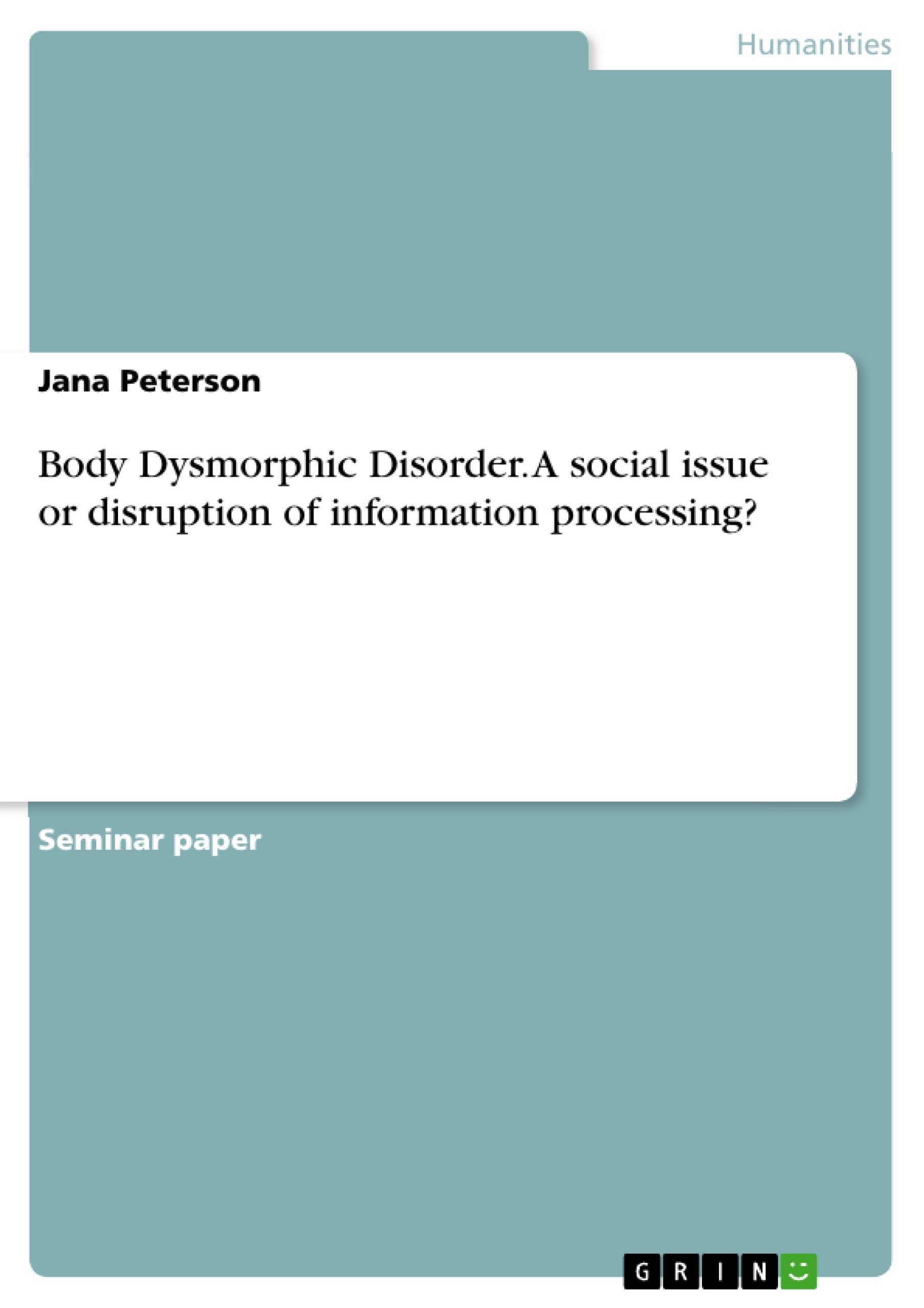This paper will present body dysmorphic disorder, its features and causes, and specifically investigate the visual processing abnormalities of BDD patients. Possible modes of onset for BDD are very broad and can be categorized into biological, psychological, and social risk factors. The following paper investigates how both social issues (such as the social comparison processes resulting from social media) and visual abnormalities are underlying modes of onset for BDD patients.
Body dysmorphic disorder (BDD) is a mental disorder characterized by distressing or impairing preoccupations with detrimental self-described defects in appearance. These self-prescribed defects lead to an onset of highly restrictive body image concerns in BDD patients which are not usually visible to others. Multiple examples in this literature review highlight the basics of body image perspectives and modern influences on BDD afflicted patients.
Table of Contents
- INTRODUCTION
- BODY IMAGE
- Social Perspective.
- Genetic and Neuroscientific Perspective …………………………………….
- Media Influences on Body Image
- BODY DYSMORPHIC DISORDER
- Definition and Classification
- ........
- Demographics and prevalence
- Causes........
- Definition and Classification
- VISUAL INFORMATION PROCESSING
- Abnormal Visual Processing..\n
- Stimulus inversion effects.
- Brain Activity.
- DISCUSSION
- BIBLIOGRAPHY
Objectives and Key Themes
This paper aims to investigate the origins of Body Dysmorphic Disorder (BDD) by exploring whether social comparison processes or disruptions in visual information processing play a more significant role in its development. The paper will examine the influence of social media and its impact on body image, considering the prevalence of social comparison and its potential to exacerbate insecurities. The paper will also delve into the neurological underpinnings of BDD, focusing on abnormalities in visual processing and their potential contribution to the disorder.
- The influence of social media and social comparison processes on body image.
- The role of visual information processing in BDD.
- The potential link between social media and BDD.
- The impact of body image on mental health.
- The importance of understanding the causes and mechanisms of BDD.
Chapter Summaries
The introduction provides context for the paper's focus on body dysmorphic disorder (BDD) by highlighting the increasing prevalence of social media and the potential impact of social comparison on body image. It argues that the constant exposure to idealized images and representations online may contribute to insecurities and, in some cases, lead to the development of BDD. The chapter also introduces the concept of visual information processing and its potential role in BDD. The second chapter explores the multifaceted concept of body image, discussing its social, genetic, and neuroscientific perspectives. This chapter examines the influences of social media on body image and how it contributes to the development of negative body image perceptions.
The third chapter dives into the definition and classification of BDD, outlining its characteristics and highlighting the distinction between the perceived flaws and the actual appearance of individuals with BDD. The chapter then explores the demographics and prevalence of the disorder, highlighting its impact on individuals and communities. The fourth chapter delves into visual information processing, exploring the specific abnormalities observed in individuals with BDD. This chapter examines the potential mechanisms by which visual information processing might be disrupted in BDD patients, leading to their distorted perceptions of their own appearance.
Keywords
Body dysmorphic disorder, body image, social comparison, social media, visual information processing, visual abnormalities, mental health, psychological disorder, media influence.
- Citation du texte
- Jana Peterson (Auteur), 2019, Body Dysmorphic Disorder. A social issue or disruption of information processing?, Munich, GRIN Verlag, https://www.grin.com/document/590711



